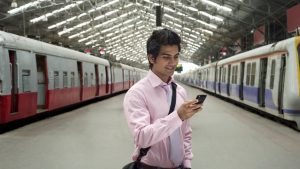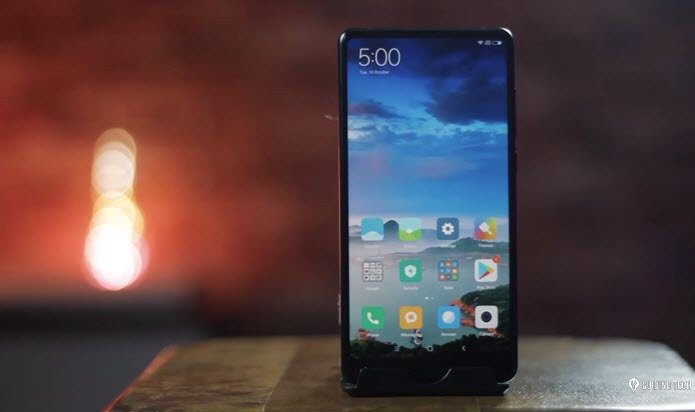Imagine you are in a tube gunning at a speed close to that of sound at 1,200km/h, blurring all scenes beyond the pressurized glass windows, reaching your destination within minutes. Too fancy to believe? Guess what, it might not be so impossible in the future. Hyperloop, a system of passenger transportation first propounded by a joint team of innovators from Tesla and SpaceX, is a sealed tube or system of tubes that can ferry you at an average speed of around 970 km/h with a top speed of 1,200 km/h, allowing a travel time of only 35 minutes, which is immensely faster than whatever we have now.
Origin of the Idea
The idea of an atmospheric railway and a vacuum transport system was first conceived by George Medhurst of London in 1799! Michael Verne, son of famous fantasy writer Jules Verne, had also written a short story called “An Express of the Future” about a submarine tube transport that could ferry a passenger capsule at a speed up to 1800 km/h under the Atlantic Ocean. In the year 1909, American engineer and rocketry pioneer Rober t Goddard, who had built the world’s first liquid-fueled rocket, had proposed the idea of a vacuum train very similar to the Hyperloop. He wrote about the idea in his short story “The High-Speed Bet” in 1905. It was an idea ahead of its time and did not get its fair share of attention from the scientific community. Robert’s wife, Esther was granted the patent for the idea in 1950, five years after his death. Later in 1972, the RAND Co. planned to build an underground railway system that would travel at the speed of sound based on vacuum tunnels. It was aptly called the ‘Vactrain’. This was the closest ancestor to the state-of-the-art Hyperloop system.
What Is So Special?
It was Elon Musk who first popularized the idea of Hyperloop in July 2012 at a PandoDaily event in Santa Monica, California. There, he proposed that an effective transport system of depressurized tubes can be made public, in which pressurized capsules will run on air bearings driven by linear induction motors and air compressors. He also stated that the transport system would include modern technological features that would make it even more comprehensive and efficient than the ones we now have in place. These features include:
Immunity to weather owing to steel body tubes maintaining a steady vacuumNo traction or collision, resulting in low maintenance costTwice the speed of a commercial passenger planeLow power consumption due to lack of tractionEnergy storage for 24-hour operations
A joint team of engineers from Tesla and SpaceX designed the Hyperloop according to the concept of Elon Musk. They designed pods that would gradually accelerate to cruising speed using a linear electric motor and glide above their track on air bearings through pressurized tubes above the ground on columns or below the ground in tunnels. Sadly, hardly any investor wanted to dip their fingers in this gravy due to skepticism and fear of a low return on investment. But when has that stopped innovators from doing their bit?
Minds Behind It
Hyperloop One (previously known as Hyperloop Technologies), a Los Angeles-based company owned by former SpaceX engineer Rob Lloyd, is working towards making this sci-fi-like idea into a reality. Although the idea was popularized by Elon Musk, Lloyd confirmed that the multi-billionaire genius is not involved in the making of Hyperloop One.
Innovators at the company are designing a vacuum tunnel that would allow the Hyperloop tubes to use lesser amounts of electricity to gain greater speeds. This video will explain how the Hyperloop works and how effective it is. In February 2017, Lloyd had talked about revolutionizing the public transportation system in India in his meeting with the then Railway Minister Suresh Prabhu. Prabhu had expressed his interest in the project and had mentioned that his team will be closely monitoring the development of the Hyperloop tech. However, no further development has been reported along this line.
How Possible Is It?
Very much so actually! By the next decade, Hyperloop One is positive on creating its first route somewhere in the western parts of the United States. However, all good things come at a price. The Hyperloop system, including the manufacturing of the tubes and the installation vacuum tunnels, is estimated by Elon Musk to cost around $6 billion. It may sound to be unaffordable but this revolutionary transportation system is more energy and cost-efficient than high-speed rails and aircraft that are in use today. SpaceX is pioneering this movement as it has already set up a hyperloop system – one mile in length with a six-foot outer diameter – at its headquarters in California. To boost the development of this technology, SpaceX had also organized the Hyperloop Pod Competition in 2015, which invites university teams around the world to design and build the best transport pod. The competition will now see its third installment in 2018. It will not only lead us towards a greener, more environment-friendly future but would also fundamentally change the way we look at traveling from one place to another. The above article may contain affiliate links which help support Guiding Tech. However, it does not affect our editorial integrity. The content remains unbiased and authentic.













